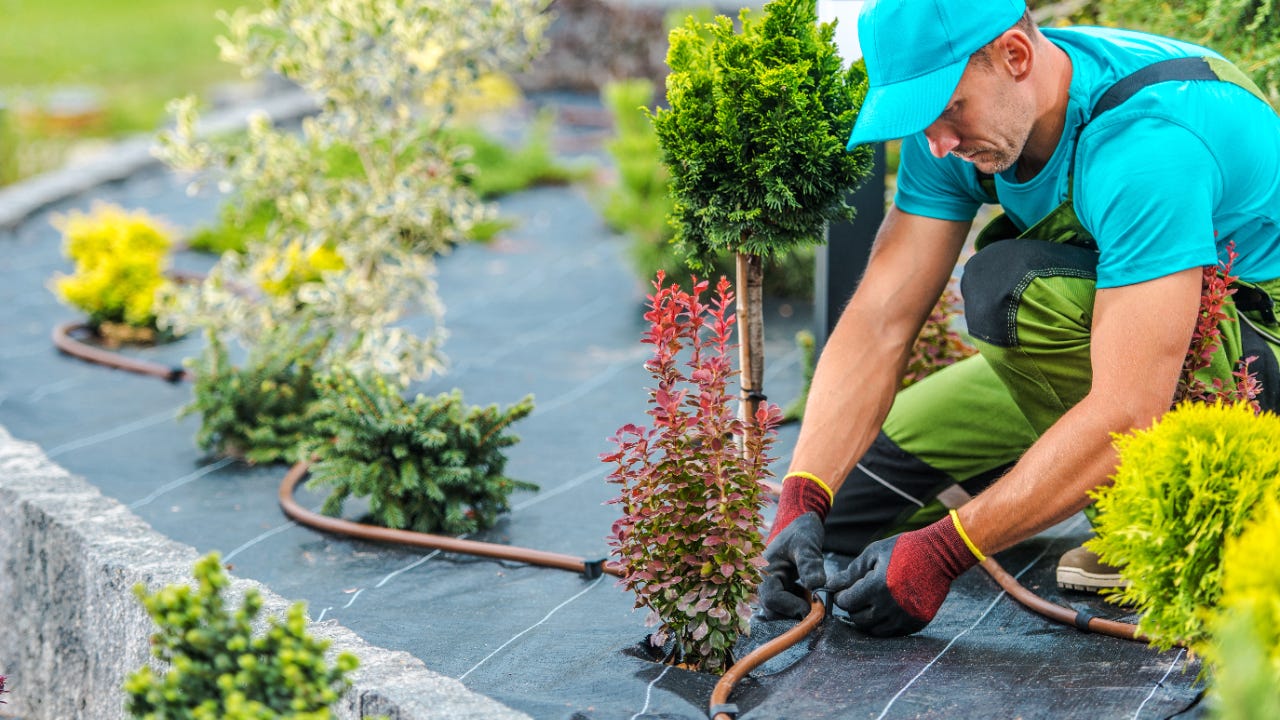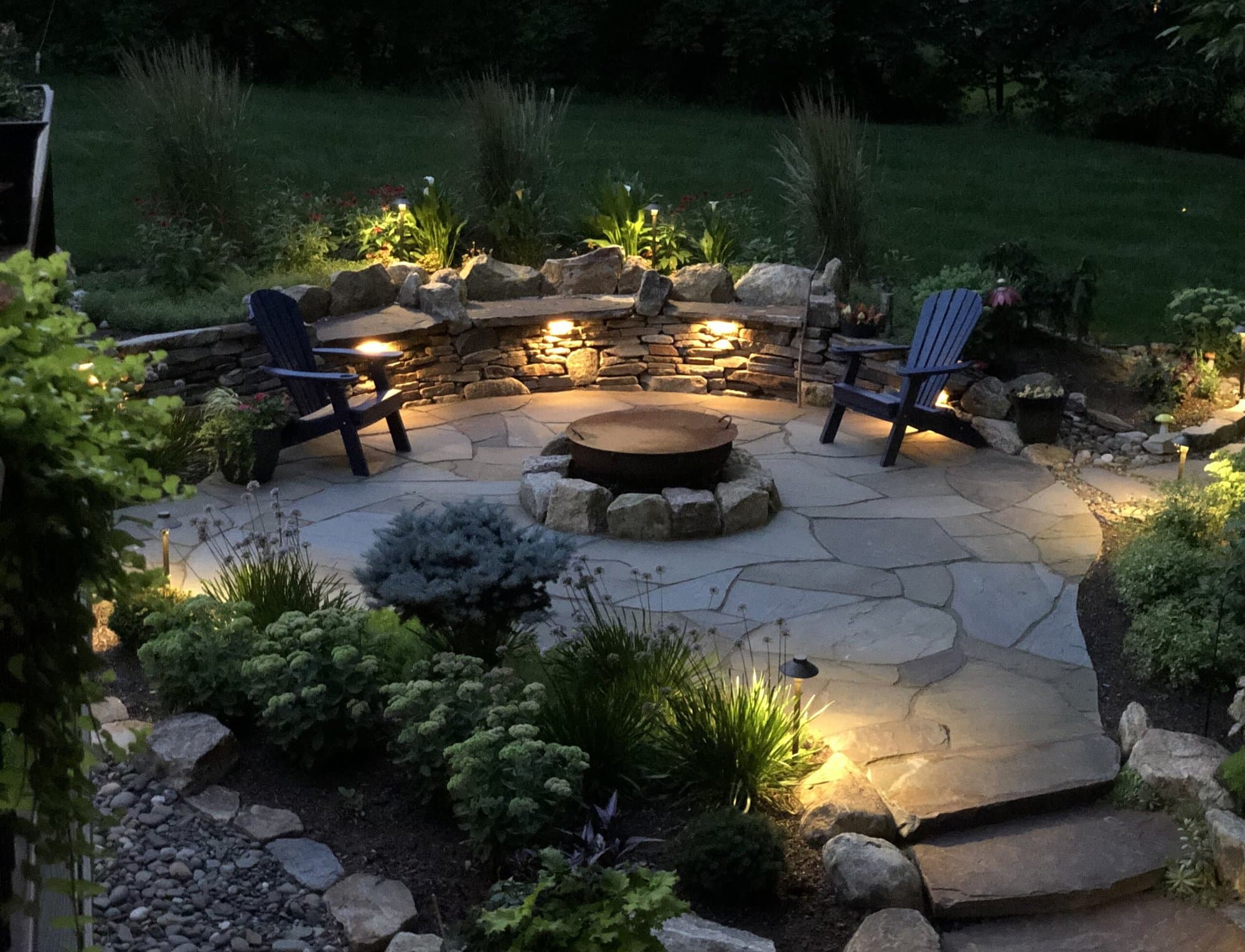Attain Stunning Outcomes with Innovative Palm Desert Landscaping Designs
Attain Stunning Outcomes with Innovative Palm Desert Landscaping Designs
Blog Article
A Comprehensive Guide to Creating and Implementing Effective Landscape Design Solutions
The art and scientific research of landscaping expand beyond simple appearances; they involve a thoughtful assimilation of design concepts, ecological stewardship, and useful execution. What techniques can one use to ensure these landscapes not just prosper but likewise thrive in harmony with their environments?

Understanding Landscape Style Concepts
One may wonder what foundational elements contribute to efficient landscape style. At its core, effective landscape style rests on a number of vital concepts that guide the plan and selection of elements within an area. These principles include unity, rhythm, proportion, and equilibrium, each serving to develop a harmonious exterior atmosphere.
Unity describes the cohesive partnership among numerous elements, guaranteeing that they collaborate visually and functionally. Equilibrium can be accomplished via asymmetrical or in proportion arrangements, allowing the landscape to feel secure and inviting. Proportion entails understanding the scale of components in relation to each other and the surrounding setting, promoting visual harmony and convenience.

Examining Your Outdoor Area
Before implementing the principles of landscape style, an extensive analysis of your exterior space is important. This first analysis helps define the range of your landscaping project and guarantees that your style straightens with the distinct attributes of your residential or commercial property. Begin by examining the measurements of your room, taking specific dimensions to understand the available area for various elements such as patios, gardens, and pathways.
Following, observe the existing features of your landscape, including topography, soil quality, and drain patterns. These aspects substantially affect plant option and positioning. In addition, examine the sunlight direct exposure throughout various areas throughout the day, as this will impact the types of plants that thrive in your yard.
Think about the microclimates produced by structures, trees, and other barriers, as they can influence temperature level and wetness levels. Take note of any type of existing plants or hardscape aspects that you wish to remove or preserve. This thorough examination lays the groundwork for a well-informed and reliable landscape design solution, making sure that your layout is not only cosmetically pleasing but sustainable and likewise functional for several years ahead.
Lasting Landscape Design Methods
These practices not only advertise eco-friendly balance however additionally enhance the functional and aesthetic value of a landscape. Carrying out reliable irrigation systems, such as drip irrigation, lessens water waste and makes certain that plants receive sufficient wetness (Palm Desert Landscaping).

An additional effective technique is the calculated positioning of trees and shrubs to offer all-natural windbreaks and color, thus reducing power other prices (Palm Desert Landscaping). Rainfall yards can be incorporated into the landscape layout to manage stormwater overflow effectively, filtering contaminants prior to they get in waterways
Selecting the Right Plant Kingdoms
Picking the right plants for your landscape is essential to accomplishing both aesthetic allure and ecological harmony. The procedure starts with an understanding of your neighborhood environment, dirt conditions, and the particular microenvironments within your landscape. Examining aspects such as sunshine direct exposure, moisture levels, and existing plants will aid you pick plants that flourish in your distinct setup.
Take into consideration integrating native plants, as they are well-adapted to regional problems, call for much less maintenance, and support local wildlife. Additionally, choosing a diverse range of varieties can boost biodiversity while lowering the danger of illness and bug outbreaks. It is vital to examine the development practices, flowering periods, and seasonal colors of prospective plants to create a dynamic and cohesive landscape.
Additionally, think of the meant use the area; as an example, if the area will experience high foot traffic, select resistant ground covers. By attentively choosing plants that line up with both your ecological demands and aesthetic goals, you can develop a lasting landscape that not just improves your property but additionally adds favorably to the bordering environment.

Application and Upkeep Strategies
When the ideal plants have her latest blog been selected for your landscape, the emphasis moves to reliable implementation and continuous upkeep approaches. Successful setup starts with correct site preparation, that includes dirt screening to identify nutrient levels and pH, adhered to by modifying the dirt as needed. Meticulously arrange plants according to their growth practices and light demands, making certain ample spacing to promote healthy development.
Watering is a vital aspect of application. Develop a watering timetable that takes into consideration the details demands of each plant species, adjusting for seasonal changes. Utilizing drip irrigation systems can enhance water efficiency and lower runoff.
Upkeep strategies must be implemented to ensure the longevity and vigor of your landscape. Normal jobs consist of weeding, mulching, and pruning to manage growth and prevent condition. Fertilization must be carried out based on soil examinations, giving the essential nutrients without over-fertilizing.
Checking for illness and insects is vital; early detection can prevent substantial damages. Finally, seasonal modifications to maintenance regimens, such as winterizing perennials and preparing for springtime growth, will make certain that your landscape stays healthy and aesthetically attractive year-round.
Verdict
In final thought, effective landscaping services require a thorough understanding of layout principles, meticulous analysis of outdoor areas, and the application of sustainable you could try this out methods. The option of suitable plant varieties plays a vital duty in boosting aesthetic allure and ecological durability - Palm Desert Landscaping. Effective implementation and continuous upkeep further make sure the long life and vitality of landscapes. By integrating these aspects, landscapes can be changed into beautiful, practical atmospheres that promote biodiversity and add favorably to community well-being.
One could question what fundamental components contribute to effective landscape layout. At its core, effective landscape design hinges on a number of essential principles that guide the arrangement and choice of components within a space.Choosing the right plants for your landscape is important to achieving both aesthetic allure and ecological consistency. It is essential to assess the development behaviors, growing durations, and seasonal shades of prospective plants to produce a cohesive and dynamic landscape.
When the ideal plants have been chosen for your landscape, the focus changes to reliable execution and continuous maintenance techniques.
Report this page